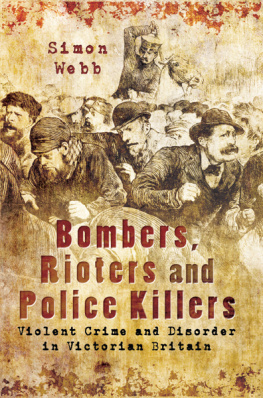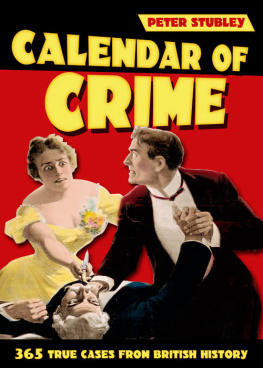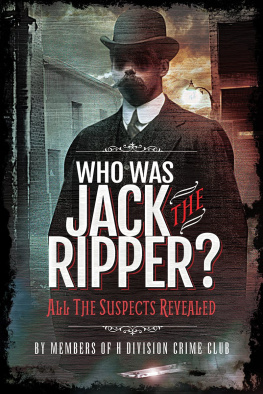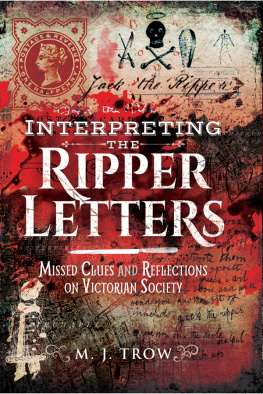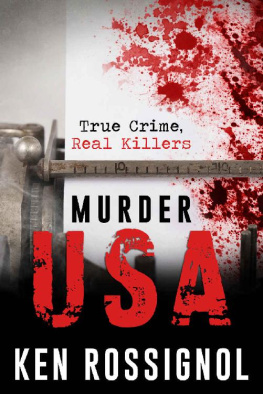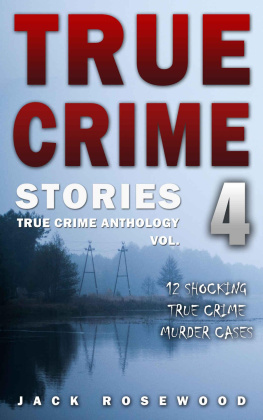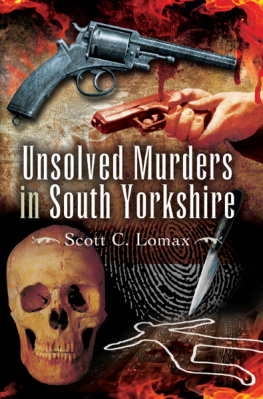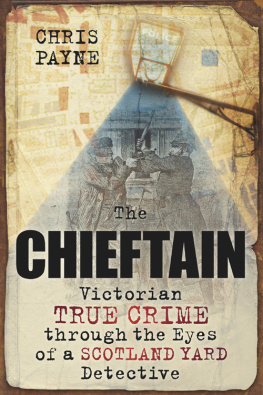CONTENTS

Part I.
A GENERAL SURVEY OF CRIME AND ITS DETECTION.

Crime Distinguished from Law-breakingThe General Liability to CrimePreventive AgenciesPlan of the WorkDifferent Types of Murders and RobberiesCrime Developed by CivilisationThe Police the Shield and Buckler of SocietyDifficulty of Disappearing under Modern ConditionsThe Press an Aid to the Police: the Cases of Courvoisier, Mller, and LefroyThe Importance of Small CluesMan Measurement and Finger-PrintsStrong Scents as CluesVictims of Blind Chance: the Cases of Troppmann and PeaceSuperstitions of CriminalsDogs and other Animals as Adjuncts to the PoliceAustralian Blacks as Trackers: Instances of their Almost Superhuman SkillHow Criminals give themselves Away: the Murder of M. Delahache, the Stepney Murder, and other InstancesCases in which there is Strong but not Sufficient Evidence: the Great Coram Street and Burdell Murders: the Probable Identity of Jack the RipperUndiscovered Murders: the Rupprecht, Mary Rogers, Nathan, and other Cases: Similar Cases in India: the Burton Crescent Murder: the Murder of Lieutenant RoperThe Balance in Favour of the Police.
I.THE CAUSES OF CRIME.
C RIME is the transgression by individuals of rules made by the community. Wrong-doing may he either intentional or accidentala wilful revolt against law, or a lapse through ignorance of it. Both are punishable by all codes alike, but the latter is not necessarily a crime. To constitute a really criminal act the offence must be wilful, perverse, malicious; the offender then becomes the general enemy, to be combated by all good citizens, through their chosen defenders, the police. This warfare has existed from the earliest times; it is in constant progress around us to-day, and it will continue to be waged until the advent of that Millennium in which there is to be no more evil passion to agitate mankind.

TYPES OF MALE CRIMINALS.
(From Photographs preserved at the Black Museum, New Scotland Yard.)
It may be said that society itself creates the crimes that most beset it. If the good things of life were more evenly distributed, if everyone had his rights, if there were no injustice, no oppression, there would be no attempts to readjust an unequal balance by violent or flagitious means. There is some force in this, but it is very far from covering the whole ground, and it cannot excuse many forms of crime. Crime, indeed, is the birthmark of humanity, a fatal inheritance known to the theologians as original sin. Crime, then, must be constantly present in the community, and every son of Adam may, under certain conditions, be drawn into it. To paraphrase a great saying, some achieve crime, some have it thrust upon them; but most of us (we may make the statement without subscribing to all the doctrines of the criminal anthropologists) are born to crime. The assertion is as old as the hills; it was echoed in the fervent cry of pious John Bradford when he pointed to the man led out to execution, There goes John Bradford but for the grace of God!
Criminals are manufactured both by social cross-purposes and by the domestic neglect which fosters the first fatal predisposition. Assuredly external factors and circumstances count for much in the causation of crime, says Maudsley. The preventive agencies are all the more necessary where heredity emphasises the universal natural tendency. The taint of crime is all the more potent in those whose parentage is evil. The germ is far more likely to flourish into baleful vitality if planted by congenital depravity. This is constantly seen with the offspring of criminals. But it is equally certain that the poison may be eradicated, the evil stamped out, if better influences supervene betimes. Even the most ardent supporters of the theory of the born criminal admit that this, as some think, imaginary monster, although possessing all the fatal characteristics, does not necessarily commit crime. The bias may be checked; it may lie latent through life unless called into activity by certain unexpected conditions of time and chance. An ingenious refinement of the old adage, Opportunity makes the thief, has been invented by an Italian scientist, Baron Garofalo, who declares that opportunity only reveals the thief; it does not create the predisposition, the latent thievish spirit.
However it may originate, there is still little doubt of the universality, the perennial activity of crime. We may accept the unpleasant fact without theorising further as to the genesis of crime. I propose in these pages to take criminals as I find them; to accept crime as an actual fact, and in its multiform manifestations; to deal with its commission, the motives that have caused it, the methods by which it has been perpetrated, the steps takensometimes extraordinarily ingenious and astute, sometimes foolishly forgetful and ineffectiveto conceal the deed and throw the pursuers off the scent; on the other hand, I shall set forth in some detail the agencies employed for detection and exposure. The subject is comprehensive, the amount of material available is colossal, almost overwhelming.

TYPES OF FEMALE CRIMINALS.
(From Photographs at the Bluck Museum.)
Every country, civilised and uncivilised, the whole world at large in all ages, has been cursed with crime. To deal with but a fractional part of the evil deeds that have disgraced humanity would fill endless volumes; where envy, hatred, and malice, and all uncharitableness have so often impelled those of weak moral sense to yield to their criminal instincts, a full catalogue would be impossible. It must be remembered that crime is ever active in seeking new outlets, always keen to adopt new methods of execution; the ingenuity of criminals is infinite, their patient inventiveness is only equalled by their reckless audacity. They will take life without a moments hesitation, and often for a miserably small gain; will prepare great coups a year or more in advance and wait still longer for the propitious moment to strike home; will employ address and great brain power, show fine resource in organisation, the faculty of leadership, and readiness to obey; will utilise much technical skill; will assume strange disguises and play many different parts, all in the prosecution of their nefarious schemes or in escaping penalties after the deed is done.
With material so abundant, so varied and complicated, it will be necessary to use some discretion, to follow certain clearly defined lines of choice. I propose in these pages to adopt the principle embodied in the title and to deal more particularly with the mysteries of crime and its incomplete, partial, or complete detection; with offences not immediately brought home to their perpetrators; offences prepared in secret, committed by offenders who have long remained perhaps entirely unknown, but who have sometimes met with their true deserts; offences that have in consequence exercised the ingenuity of pursuers, showing the highest development of the game of hide-and-seek, where the hunt is man, where one side fights for life and liberty, immunity from well-merited reprisals, the other is armed with authority to capture the human beast of prey. The flights and vicissitudes of criminals with the police at their heels make up a chronicle of moving, hair-breadth adventure unsurpassed by books of travel and sport.



